The Signalling Centre
Early Signalling – 1838
The Early Signalling – 1838 area looks at the way things were when the Great Western Railway opened. The almost complete reliance on the vigilance of the Railway Policeman and the relatively slow speeds and low frequency of the train service are considered.
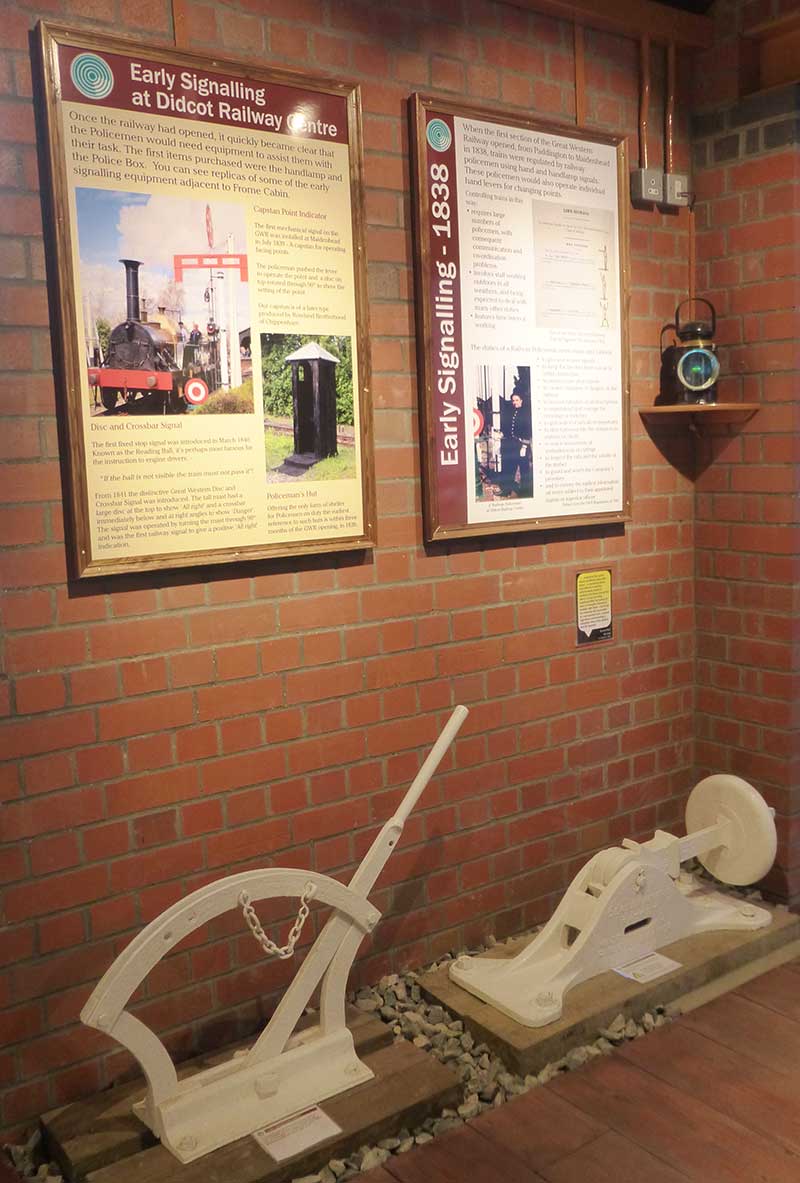
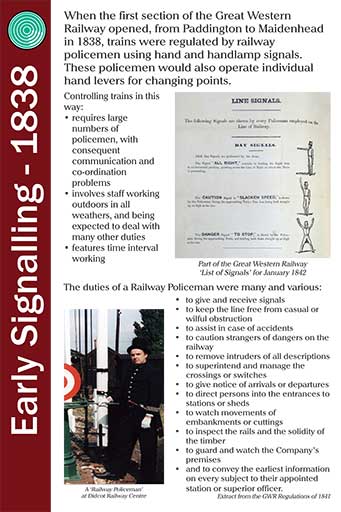
When the first section of the Great Western Railway opened, from Paddington to Maidenhead in 1838, trains were regulated by railway policemen using hand and handlamp signals. These policemen would also operate individual hand levers for changing points.
Controlling trains in this way:
- requires large numbers of policemen, with consequent communication and co-ordination problems
- involves staff working outdoors in all weathers, and being expected to deal with many other duties
- features time interval working
The duties of a Railway Policeman were many and various:
- to give and receive signals
- to keep the line free from casual or wilful obstruction
- to assist in case of accidents
- to caution strangers of dangers on the railway
- to remove intruders of all descriptions
- to superintend and manage the crossings or switches
- to give notice of arrivals or departures
- to direct persons into the entrances to stations or sheds
- to watch movements of embankments or cuttings
- to inspect the rails and the solidity of the timber
- to guard and watch the Company’s premises
- and to convey the earliest information on every subject to their appointed station or superior officer.
Extract from the GWR Regulations of 1841
The visitor is introduced to the early signalling on the Branch line at Didcot adjacent to Frome Mineral Junction Signal Cabin of 1875, and the Transfer Shed.
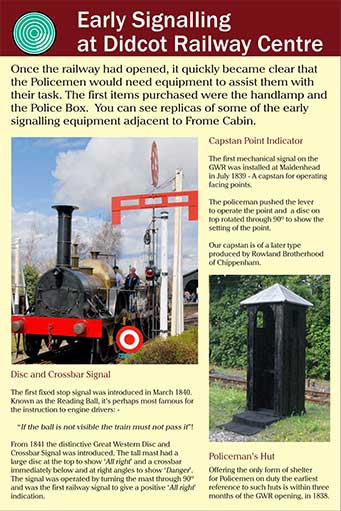
Once the railway had opened, it quickly became clear that the Policemen would need equipment to assist them with their task. The first items purchased were the handlamp and the Police Box. You can see replicas of some of the early signalling equipment adjacent to Frome Cabin.
Capstan Point Indicator
The first mechanical signal on the GWR was installed at Maidenhead in July 1839 - A capstan for operating facing points.
The policeman pushed the lever to operate the point and a disc on top rotated through 90º to show the setting of the point.
Our capstan is of a later type produced by Rowland Brotherhood of Chippenham.
Disc and Crossbar Signal
The first fixed stop signal was introduced in March 1840. Known as the Reading Ball, it’s perhaps most famous for the instruction to engine drivers: -
“If the ball is not visible the train must not pass it”!
From 1841 the distinctive Great Western Disc and Crossbar Signal was introduced. The tall mast had a large disc at the top to show ‘All right’ and a crossbar immediately below and at right angles to show ‘Danger’. The signal was operated by turning the mast through 90º and was the first railway signal to give a positive ‘All right’ indication.
Policeman’s Hut
Offering the only form of shelter for Policemen on duty the earliest reference to such huts is within three months of the GWR opening, in 1838.
This area is a little light on actual exhibits for the perfectly good reason that when the railways first opened there was very little equipment that could be described as ‘signalling’.
Principal Exhibits
| Description | Original Location (where known) |  |
Point Lever (with locking peg) The earliest types of point lever required that the lever be held in position by a pin placed through a hole in the quadrant, to ensure that the point blades themselves could not move under a train. |
|---|---|---|
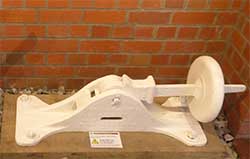 |
Point Lever (weighted type) In circa 1900 the weighted lever was introduced which held the point blades in position by the large weight on the lever. |
|
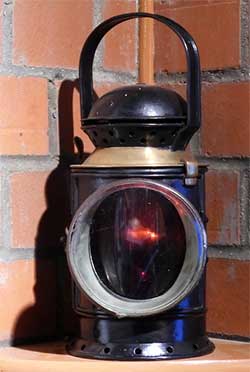 |
GWR Handlamp (Brass Collar Type) |
To return to The Signalling Centre page - Simply close this window